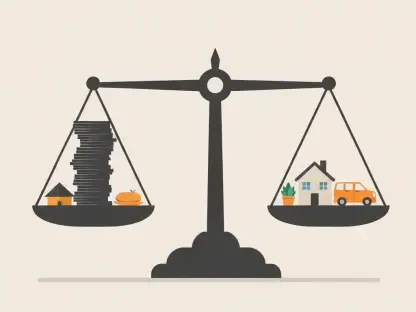The ASX 200 index experienced a significant climb recently, driven by a softer-than-expected fourth-quarter consumer price index (CPI) reading. By 2:00 PM AEDT, the ASX 200 had surged 0.89%, reaching a seven-week high of 8481.6. This rise reflects the growing optimism in the market surrounding potential interest rate cuts by the Reserve Bank of Australia (RBA). Central to this optimism is the lower-than-anticipated headline inflation of 0.2% for the quarter, which has eased the annual rate to 2.4%. The RBA’s preferred measure, the trimmed mean inflation, also fell to 3.2%, further supporting the case for an interest rate cut.
Speculation in the market places a 75% chance on a 25 basis point cut in February, which could potentially lower the cash rate to 4.10%. The rates market is also factoring in additional reductions through 2025, predicting an end rate of 3.50%. This aligns with the broader expectations of easing monetary policy in response to the weakening inflationary pressures. Such a move would not only boost market sentiment but also provide relief across various sectors of the economy. The prospect of lower interest rates is particularly significant for the mortgage sector and the broader economy, which have been under strain due to higher borrowing costs.
Sector Gains and Market Optimism
In light of the softer inflation figures and potential rate cuts, various sectors within the ASX 200 have experienced substantial gains, reflecting the positive market sentiment. Technology stocks, in particular, have shown notable increases, with companies like Seek, Appen, Block, and Wisetech Global leading the charge. These gains can be attributed to the expected relief on borrowing costs, which is crucial for tech firms that rely heavily on innovation and investment. The property sector has also seen a surge, with stocks such as Mirvac, GPT Group, Stockland, and Scentre benefiting from the anticipation of an impending rate cut cycle. Lower interest rates could stimulate property investments and boost demand, providing a much-needed lift to the sector.
Major banks, including ANZ, Macquarie, Westpac, CBA, and NAB, have not been left behind in this rally. The banking sector stands to gain significantly from a lower interest rate environment, as it can lead to increased lending activities and improved profit margins. The overall bullish sentiment in the market is evident as the ASX 200’s upward momentum positions the index within a bullish trend channel. It is now poised to potentially revisit its record high of 8514, with trend channel resistance estimated around 8630. This optimistic outlook is closely tied to the RBA’s upcoming decision, which will be crucial in shaping the market’s trajectory in the coming months.
The anticipation of the RBA’s decision is heightened by the fact that it comes in an election year. A rate cut could provide relief to the mortgage sector and the broader economy, which could, in turn, influence the political landscape. The potential for lower borrowing costs and improved economic conditions might serve as a favorable backdrop for the incumbent government. However, it also raises questions about the sustainability of such a policy in the long term, as the effectiveness of rate cuts in stimulating economic growth remains a debated issue.
Potential New Highs for the ASX 200 Index
The ASX 200 index saw a significant rise recently, driven by a lower-than-expected fourth-quarter consumer price index (CPI) reading. By 2:00 PM AEDT, the ASX 200 had surged 0.89%, reaching a seven-week high of 8481.6. This increase reflects growing market optimism about potential interest rate cuts by the Reserve Bank of Australia (RBA). Lower-than-expected headline inflation of 0.2% for the quarter has reduced the annual rate to 2.4%, fueling hopes for a rate cut. The RBA’s preferred inflation measure, the trimmed mean inflation, also dropped to 3.2%, further strengthening the case for an interest rate cut.
Market speculation suggests a 75% chance of a 25 basis point cut in February, potentially lowering the cash rate to 4.10%. The rates market is also anticipating further reductions through 2025, with an expected end rate of 3.50%. This aligns with broader expectations of easing monetary policy in response to weakening inflationary pressures. Such a move would boost market sentiment and provide relief to various sectors of the economy, particularly the mortgage sector, which has been struggling with higher borrowing costs.









